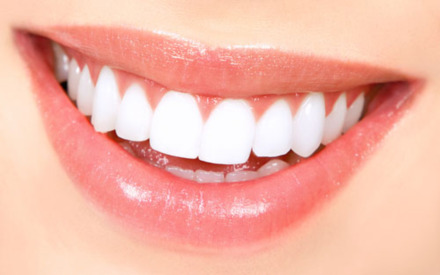What is available to whiten your teeth?

Whitening toothpastes
There are many tooth “whitening” toothpastes available to the public and most manufacturers produce their own particular versions of these toothpastes. Many experts believe that these labels can be misleading because these product tend not to whiten but rather simply clean the surface of the tooth. Most whitening toothpastes contain abrasive particles that help remove stains produced by food and drink and trapped on the surface of the tooth enamel. They remove these stains over time and may prevent new stains forming. They may make the teeth appear whiter but the effect is usually minimal. Given the cost of these toothpastes the benefit may justify the cost.
A study of tooth whitening toothpastes in 2011 found that most effective whitening toothpastes are generally more abrasive. Some were found to be so abrasive that they were considered potentially damaging to enamel. Prolonged use of these products could lead to the eroding of the outer enamel shell leading to sensitivity, accelerated wear and enamel thinning. This in turn could make your teeth appear less white – the opposite of the intention.
Pre-brushing mouthrinses
Pre-brush rinses usually contain a small percentage of hydrogen peroxide. The instructions often recommend that you rinse twice daily for 60 seconds and prior to tooth brushing. The theory is that the bleaching mouth rinse will make light work of the stains when you hit them with your toothbrush.
The Problem: Hydrogen peroxide is so weak and unstable that the 60 second exposure to it produces no significant effect. The effect is minimal at best. What’s more is that some users experience tooth sensitivity after using the rinses. Interestingly, the placebo effect leads many users to believe that these rinses actually work. I a study by Kugel, the researches saw no benefit yet the about 30% of the participants in the trial reported that their teeth were whiter.
Whitening chewing gums
Wouldn’t it be great if you could whiten your teeth while you chew gum? While on paper it would seem possible that the contents of such gums could potentially remove extrinsic/external stains on teeth, the evidence is less encouraging. These gums contain ingredients that are abrasive and have the capacity to coat the enamel surface preventing stain development. There has been very little research undertaken to prove the effectiveness of such products. Some studies have found that the main ingredient in these products, sodium hexametaphopshate, can prevent new surface stains from forming on enamel better than not chewing gum or placebo chewing gums.
Over the counter strips, gels and tray systems
Over the counter bleaching strips are extremely popular in the United States and are becoming more prevalent in the Australian marketplace. They have been shown to be effective in the removal of extrinsic stains and can be effective in the removal of intrinsic stains also. They typically contain hydrogen peroxide and can whiten teeth several shades lighter. Their success is dependant upon the proper application of the strips. In most cases a failed result can be related to inappropriate application of the strips.
Over the counter gels or home applied tray systems contain hydrogen peroxide or carbide peroxide and can also produce significant whitening comparable to in chair bleaching.
Problems with these systems:
- Strips may be difficult to apply and keep in place
- Paint on gels can be difficult to apply well and may be diluted by saliva reducing their effectiveness
- Non custom over the counter trays fit poorly and again allow the escape of gel or dilution with saliva again reducing the effectiveness or allowing the gel to affect the surrounding gums.
- Results may be acceptable but doesn’t work for everyone
Professional bleaching procedures
Professional bleaching procedures are the ‘gold standard’ in tooth whitening systems. They are the most predictable and safest way of achieving a whiter smile. This safety and predictability comes at a cost however. These systems are the most expensive when compared to the other options. A side benefit of these bleaching systems in the need for comprehensive assessment of the teeth of gums and teeth prior to their application. The state of your teeth can be assessed and any preexisting problems rectified before bigger problems arise. It also allows you to discuss all the pros and cons of tooth bleaching with someone who understands the process and intimately.
The best bleaching solution can be tailored for your specific needs and achieve the desired end result.
Most in chair bleaching systems include a custom made tray and home bleaching kits to help maintain the achieved results. It is important to remember that everyone will experience some rebound in colour and the bleached teeth will appear a little duller after a couple of weeks. Your dentist can discuss strategies to manage this inevitability.
Homemade tooth-whitening tools
A quick internet search will reveal numerous homemade bleaching solutions that are reported to produce a whitening effect. Home made bleaching toothpastes made from baking soda hydrogen peroxide, brushing with apple cider vinegar or applying orange peel or other fruit peels directly to the tooth surface are just some of the techniques reported online. The safety and effectiveness of these techniques have not been validated and care need to be exercised to prevent unnecessary side effects.
Overly frequent application of many of these products may damage the enamel and harm your teeth irreversibly.
Consumers should be careful and wary of tooth-bleaching businesses operated in non dental settings.









